
JOURNAL OF THE METEOROLOGICAL SOCIETY OF JAPAN
Scope & Guideline
Championing Open Access to Meteorological Research
Introduction
Aims and Scopes
- Tropical Cyclone Research:
The journal frequently publishes studies on tropical cyclones, including their intensity, forecast methodologies, and interactions with atmospheric conditions. This area represents a significant focus due to the impact of typhoons on Japan. - Data Assimilation Techniques:
Research involving innovative data assimilation techniques, such as ensemble Kalman filters and machine learning methods, is prevalent. These studies aim to improve numerical weather predictions and climate models. - Regional Climate Modeling:
The journal emphasizes regional climate studies, particularly those concerning East Asia and the Western North Pacific. This includes investigations into precipitation patterns, monsoon dynamics, and the effects of climate change. - Remote Sensing and Observation Methodologies:
A significant number of papers utilize remote sensing technologies and observational data to analyze meteorological phenomena, including precipitation measurement and atmospheric profiling. - Impact of Climate Change on Weather Patterns:
There is a consistent focus on understanding how climate change is influencing extreme weather events, precipitation variability, and temperature trends in Japan and surrounding regions.
Trending and Emerging
- Machine Learning Applications in Meteorology:
There is a growing trend of applying machine learning techniques to improve weather forecasting, data assimilation, and climate modeling, indicating a shift towards integrating advanced computational methods in meteorological research. - Extreme Weather Events Analysis:
Recent publications have increasingly focused on analyzing extreme weather events, such as heavy rainfall and typhoons, particularly in the context of climate change, highlighting their societal impacts and forecasting challenges. - Interdisciplinary Approaches:
Emerging research is showing an interdisciplinary approach, combining meteorology with environmental science, urban planning, and public health to address complex issues such as heat stress and disaster preparedness. - High-Resolution Climate Modeling:
There is a trend towards using high-resolution climate models to capture local weather phenomena and their impacts more accurately, reflecting advancements in computational capabilities and data availability. - Impact of Aerosols and Pollution on Weather:
Research exploring the influence of aerosols and urban pollution on weather patterns is becoming more prominent, reflecting a growing awareness of anthropogenic effects on meteorological systems.
Declining or Waning
- Traditional Statistical Forecasting:
There has been a noticeable decline in papers focusing solely on traditional statistical forecasting methods, as more researchers are gravitating towards advanced computational techniques and machine learning approaches. - Global Climate Models without Regional Focus:
Research that applies global climate models without a specific regional focus has decreased, likely due to the growing emphasis on localized studies that address specific climatic impacts in East Asia. - Basic Atmospheric Physics Studies:
There appears to be a waning interest in basic studies of atmospheric physics that do not directly contribute to practical applications, as research has shifted towards more applied meteorological investigations.
Similar Journals
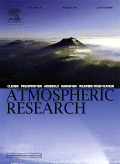
Atmospheric Research
Illuminating Atmospheric Challenges Through Rigorous ResearchAtmospheric Research is a premier journal published by Elsevier Science Inc, specializing in the field of Atmospheric Science. With a commendable impact factor, it holds a distinguished position in the Scopus rankings, being placed 14th out of 148 journals within its category and achieving a remarkable 90th percentile rank. This journal serves as a vital outlet for rigorous research on atmospheric processes, climate variability, and meteorological phenomena, providing a platform for scientists, researchers, and students to disseminate their findings and contribute to the advancement of knowledge in this critical field. Although it is not an open-access journal, its strong reputation and selective publication criteria ensure that only high-quality and impactful studies are featured. Since its inception in 1986, Atmospheric Research has continuously evolved to meet the dynamic nature of atmospheric studies, making it a fundamental resource for anyone engaged in understanding and addressing atmospheric challenges worldwide.
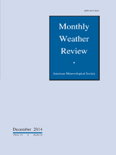
MONTHLY WEATHER REVIEW
Connecting Researchers through Meteorological DiscoveriesMONTHLY WEATHER REVIEW, published by the American Meteorological Society, is a leading journal in the field of atmospheric science, recognized for its rigorous peer-reviewed articles that contribute significantly to the understanding of weather patterns and climate systems. With an impressive Q1 ranking in the 2023 category quartiles and a strong standing (#41 out of 148) in the Earth and Planetary Sciences Scopus rankings, the journal serves as an essential resource for researchers, professionals, and students alike. Although it does not currently offer open access, its comprehensive coverage of meteorological research spanning from 1960 to 2024 makes it invaluable for those seeking to stay at the forefront of developments in weather analysis and prediction. Situated in Boston, Massachusetts, this journal not only showcases pioneering research but also emphasizes the importance of collaborative efforts in the meteorological community, ultimately contributing to advancements in our understanding of atmospheric phenomena.

Atmosphere-Korea
Elevating Scientific Dialogue in Atmospheric ResearchAtmosphere-Korea is a prestigious journal published by the Korean Meteorological Society, dedicated to advancing the field of atmospheric sciences. With a focus on both theoretical and applied research, this journal encompasses a wide range of topics including meteorology, climatology, and environmental science, providing a platform for researchers to disseminate their findings and enhance scientific dialogue. Although currently not categorized under an open access model, the journal ensures that all articles meet rigorous scientific standards, thereby maintaining its credibility and academic integrity. The ISSN 1598-3560 and E-ISSN 2288-3266 identify its unique contributions to global knowledge in meteorology. Researchers, professionals, and students alike benefit from the invaluable insights offered through its publications, making Atmosphere-Korea an essential resource in understanding climatic phenomena and their implications for society.

Asia-Pacific Journal of Atmospheric Sciences
Bridging Research and Practice in Atmospheric SciencesWelcome to the Asia-Pacific Journal of Atmospheric Sciences, a leading publication in the field of atmospheric science, published by the Korean Meteorological Society. With an ISSN of 1976-7633 and an E-ISSN of 1976-7951, this journal has been a cornerstone for researchers and practitioners in the atmospheric sciences since its inception in 2008. Recognized for its rigorous peer-reviewed articles, it holds a commendable Q2 quartile ranking in 2023 and is placed at the 51st rank out of 148 in the Earth and Planetary Sciences, reflecting its impact within the community with a 65th percentile. The journal features a broad scope encompassing meteorology, climatology, and environmental sciences, making it an essential resource for scholars and industry experts alike. As an open access journal, it ensures that groundbreaking research is widely accessible, fostering collaboration and innovation across the Asia-Pacific region and beyond. Explore the latest findings and advancements in atmospheric sciences and contribute to the dynamic field of climate research through the journal's engaging content.

Atmospheric Science Letters
Unlocking the secrets of the Earth's atmosphere.Atmospheric Science Letters, published by WILEY, is a leading open-access journal in the field of Atmospheric Science. Since its establishment in 2000, it has significantly contributed to advancing knowledge related to the Earth's atmosphere, focusing on both theoretical and practical aspects. With an impressive Q2 ranking in the Atmosphere Science category as of 2023 and a Scopus rank of 62 out of 148, this journal provides a platform for researchers and professionals to share their findings and insights. The journal’s commitment to open access since 2016 ensures that cutting-edge research is accessible to a global audience, fostering collaboration and innovation in the atmospheric sciences. Addressed from its headquarters at 111 River St, Hoboken, NJ, USA, Atmospheric Science Letters is pivotal for students, researchers, and professionals seeking to stay abreast of the latest developments in this dynamic field.
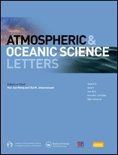
Atmospheric and Oceanic Science Letters
Bridging the Gap Between Atmosphere and OceanAtmospheric and Oceanic Science Letters is a premier open-access journal dedicated to the rapidly evolving fields of atmospheric science and oceanography. Published by KEAI PUBLISHING LTD, this journal aims to foster research dissemination and collaboration by providing a platform for high-quality research articles, reviews, and case studies that address critical issues impacting atmospheric and oceanic systems. With an impressive impact factor reflecting its esteemed position—including being ranked Q2 in Atmospheric Science and Q1 in Oceanography in 2023—this journal is an essential resource for researchers, professionals, and students alike. The journal's Open Access model, adopted since 2016, ensures that groundbreaking research is readily available to a global audience, enhancing knowledge transfer and facilitating innovative solutions to environmental challenges. Operating out of the United Kingdom and reaching an international readership, Atmospheric and Oceanic Science Letters plays a pivotal role in shaping our understanding of the interactions between the atmosphere and oceans, making it a vital publication for anyone aiming to stay at the forefront of these dynamic scientific fields.
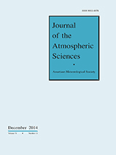
JOURNAL OF THE ATMOSPHERIC SCIENCES
Advancing the Frontiers of Atmospheric ResearchJOURNAL OF THE ATMOSPHERIC SCIENCES, published by the American Meteorological Society, stands as a premier resource for the latest research in atmospheric sciences. With an impressive impact factor and a Q1 ranking in the Atmospheric Science category for 2023, this journal is recognized for its rigorous peer-reviewed articles that contribute to the understanding and advancement of weather, climate, and dynamics of the atmosphere. Established in 1969, the journal has maintained high academic standards and delivers valuable insights spanning over five decades, thus catering to an audience of researchers, professionals, and students alike. Although it does not offer open-access options, it provides critical access through various institutional subscriptions, ensuring that significant research findings are disseminated widely within the scientific community. The journal's address is located at 45 Beacon St, Boston, MA 02108-3693, United States, and it accepts submissions and articles until 2024, continuing its legacy of excellence in atmospheric research.
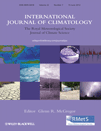
INTERNATIONAL JOURNAL OF CLIMATOLOGY
Connecting research with real-world climate challenges.INTERNATIONAL JOURNAL OF CLIMATOLOGY, published by WILEY, is a leading peer-reviewed journal dedicated to advancing our understanding of climate science. As a prominent periodical within the Q2 category of Atmospheric Science, it encompasses a wide range of topics related to climatology, including climate variability, modeling, and impacts of climate change, making it an essential resource for researchers, professionals, and students in the field. With a history of publication spanning from 1989 to 2024, the journal has established a strong reputation for disseminating high-quality research that informs policy and practice. Though it does not offer Open Access options, its articles are accessible to a broad audience through institutional subscriptions, ensuring that significant findings can reach those who need them most. The INTERNATIONAL JOURNAL OF CLIMATOLOGY plays a crucial role in connecting academia with pressing environmental issues, thus fostering dialogue and innovation in climate research.

Weather and Climate
Advancing the Science of Our AtmosphereWeather and Climate is a prestigious, peer-reviewed journal published by the Meteorological Society of New Zealand, dedicated to advancing knowledge in the domains of meteorology and climatology. With the ISSN 0111-5499, the journal serves as a vital platform for researchers and professionals to disseminate impactful findings that address pressing issues related to weather patterns and climate change. Although it does not operate on an open-access model, it provides a wealth of valuable insights drawn from a diverse range of studies. The significance of this journal in the scientific community is underscored by its commitment to fostering interdisciplinary collaboration and sharing innovative research that can inform policy-making and environmental management strategies. Located in Wellington, New Zealand, Weather and Climate not only contributes to regional meteorological discourse but also holds relevance for the global scientific landscape, making it essential reading for anyone invested in the future of our changing climate.
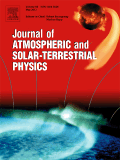
JOURNAL OF ATMOSPHERIC AND SOLAR-TERRESTRIAL PHYSICS
Advancing Knowledge in Atmospheric and Space SciencesJournal of Atmospheric and Solar-Terrestrial Physics, published by Pergamon-Elsevier Science Ltd, stands as a pivotal academic resource in the realms of Atmospheric Science, Geophysics, and Space and Planetary Science. With an ISSN of 1364-6826 and an E-ISSN of 1879-1824, this journal encompasses a robust collection of research findings and reviews that address the intricacies of atmospheric processes and solar-terrestrial interactions. The journal has shown consistent academic performance, earning commendable rankings in 2023, including Q3 in Atmospheric Science and Q2 in Geophysics, reflecting its importance for scholarly communication and advancement in these fields. Spanning an impressive convergence of research from 1997 to 2024, it aims to foster interdisciplinary collaboration and inspire innovations among researchers, professionals, and students. Although it currently does not offer open access, the journal is committed to disseminating high-quality content that continues to drive forward our understanding of complex environmental phenomena.